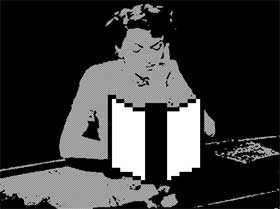

Alessandro Ludovico is no stranger to technology - he worked with a group on the controversial Amazon Noir project. Scripts repeatedly mined the booksellers "Look Inside this book" feature, piecing back the hundreds of random pages into complete novels, then redistributing them via P2P (Peer to Peer) filesharing software. Together with Paolo Cirio, he also staged "Google Will Eat Itself" a couple years ago, filtering funds received from Google AdWords to purchase stock in the global search giant. So at the "still/open" artists workshop in Melbourne last week, as Janine Randerson reports, his topic was very surprising. Paper.


Ludovico's talk, the Persistence of Paper deconstructed the hailed 'paperless office', and elaborated on the strength of the humble book as an historical record amidst a very transient web, an autonomous lo-tech solution which is "reliable and not dependent on the lack of tcp/ip waves or electricity". He moves on to suggesting "just in time" publishing - newspapers or magazines that are feverishly updated until a few moments before cheap offline production onto paper.
Helmut Smitt's "Pamphlet" work riffs on this new ease of publishing, allowing visitors to type in a message and have a printer spit out a brochure from the 10th floor of a tower block. Services like online publisher lulu.com make significantly bigger works possible - send a PDF, choose distribution methods, and even get an ISBN. Gmail announced it's "Paper Gmail" feature, allowing printouts of archived mails, as an April Fools Day joke. But users, and reporters fell for it, some even requesting it after they uncovered the prank.
No comments:
Post a Comment